DECLARATION OF INDEPENDENCE]. In Congress, July 4, 1776. The Unanimous Declaration of the Thirteen United States of America. When in the Course of Human Events... [Washington, D.C., engraved by W.I. Stone, 1823, printed by Peter Force, 1848]. Folio broadside (28 3/8 x 25 7/8 in.), minor marginal tears, neatly mended from the verso, a narrow strip (3¾ x ¾ in.) defective in bottom portion, with about a dozen letters in four signatures supplied in almost undetectable facsimile, light age toning to the sheet. PETER FORCE'S 1848 PRINTING OF THE DECLARATION OF INDEPENDENCE, FROM W.J. STONE'S 1823 COPPERPLATE, ON RICE PAPER In 1820, Secretary of State John Quincy Adams, the son of a Signer, commissioned William J. Stone to execute a full-scale facsimile of the historic document, the original of which had already suffered severely from fading and wear during its vicissitudes since 1776. The engraving of the very large copperplate, it is reported, took Stone a full three years, and the tracing process he employed, some believe, "did indeed cause some physical harm to the parchment" of the original document (National Archives, Declaration of Independence: The Adventures of A Document , 1976, p.17.) On January 2, 1823, Adams formally notified the Senate that 200 copies had been printed, all on large sheets of expensive parchment similar to that used for the 1776 engrossed original. Congress, in a Resolution of 26 May, directed that the completed engravings be distributed in honor of the 50th anniversary of the Declaration of Independence. Twenty-five years after Stone's elaborate engraved facsimile on parchment had been printed, the historian Peter Force (1790-1868) utilized Stone's surviving copperplate to print impressions of the facsimile on fine rice paper; a paper with a color tone quite similar to parchment. These were intended for inclusion in Force's American Archives, a planned monumental compilation of important original American documents, prepared under authority of Congress. Force conscientiously deleted Stone's 1823 imprint in the upper portion of the plate, and added a new imprint ("W.J. Stone sc. Washington.") in the lower left. A total of 1500 copies of American Archives were projected, but in the end, subscriptions for the elaborate edition were not forthcoming and in the end far fewer copies (perhaps only 500) were issued. (See notes to lot 382).
DECLARATION OF INDEPENDENCE]. In Congress, July 4, 1776. The Unanimous Declaration of the Thirteen United States of America. When in the Course of Human Events... [Washington, D.C., engraved by W.I. Stone, 1823, printed by Peter Force, 1848]. Folio broadside (28 3/8 x 25 7/8 in.), minor marginal tears, neatly mended from the verso, a narrow strip (3¾ x ¾ in.) defective in bottom portion, with about a dozen letters in four signatures supplied in almost undetectable facsimile, light age toning to the sheet. PETER FORCE'S 1848 PRINTING OF THE DECLARATION OF INDEPENDENCE, FROM W.J. STONE'S 1823 COPPERPLATE, ON RICE PAPER In 1820, Secretary of State John Quincy Adams, the son of a Signer, commissioned William J. Stone to execute a full-scale facsimile of the historic document, the original of which had already suffered severely from fading and wear during its vicissitudes since 1776. The engraving of the very large copperplate, it is reported, took Stone a full three years, and the tracing process he employed, some believe, "did indeed cause some physical harm to the parchment" of the original document (National Archives, Declaration of Independence: The Adventures of A Document , 1976, p.17.) On January 2, 1823, Adams formally notified the Senate that 200 copies had been printed, all on large sheets of expensive parchment similar to that used for the 1776 engrossed original. Congress, in a Resolution of 26 May, directed that the completed engravings be distributed in honor of the 50th anniversary of the Declaration of Independence. Twenty-five years after Stone's elaborate engraved facsimile on parchment had been printed, the historian Peter Force (1790-1868) utilized Stone's surviving copperplate to print impressions of the facsimile on fine rice paper; a paper with a color tone quite similar to parchment. These were intended for inclusion in Force's American Archives, a planned monumental compilation of important original American documents, prepared under authority of Congress. Force conscientiously deleted Stone's 1823 imprint in the upper portion of the plate, and added a new imprint ("W.J. Stone sc. Washington.") in the lower left. A total of 1500 copies of American Archives were projected, but in the end, subscriptions for the elaborate edition were not forthcoming and in the end far fewer copies (perhaps only 500) were issued. (See notes to lot 382).
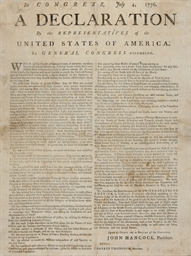
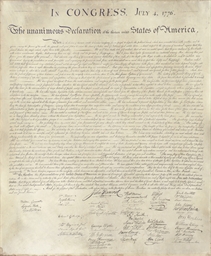
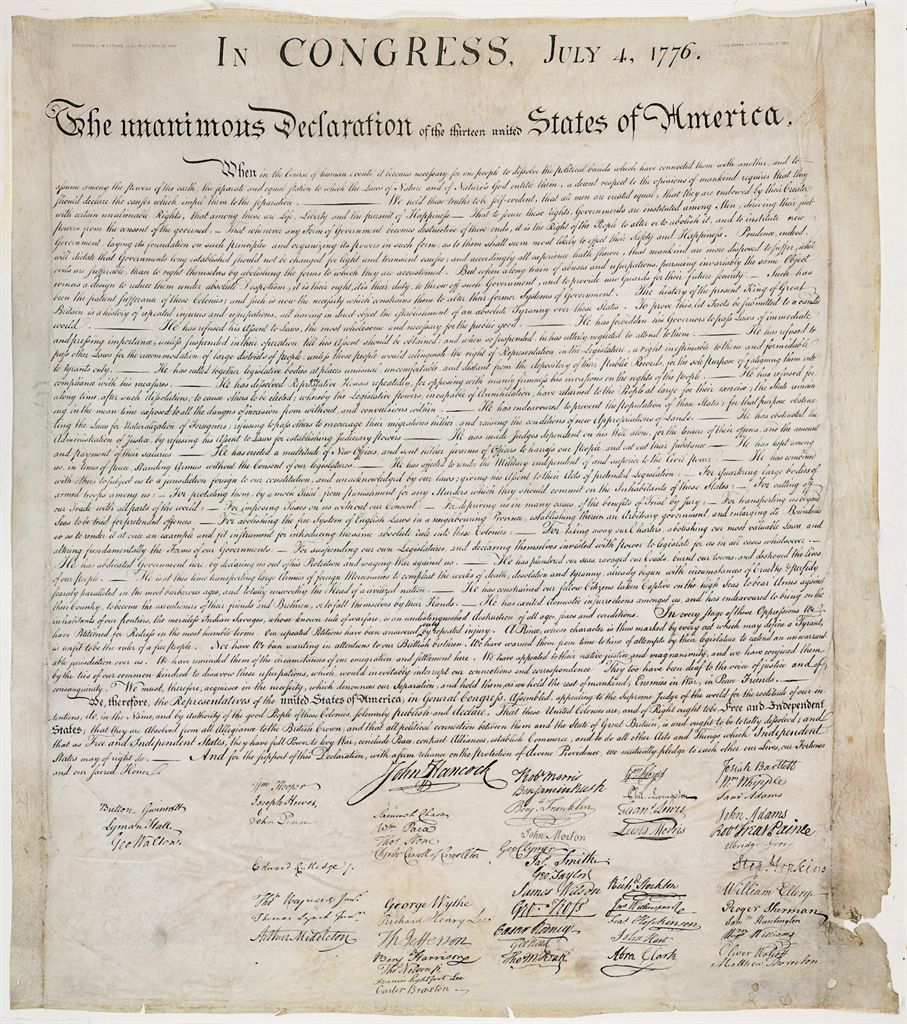
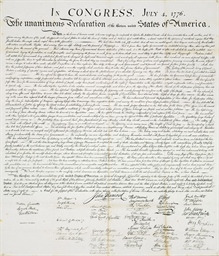
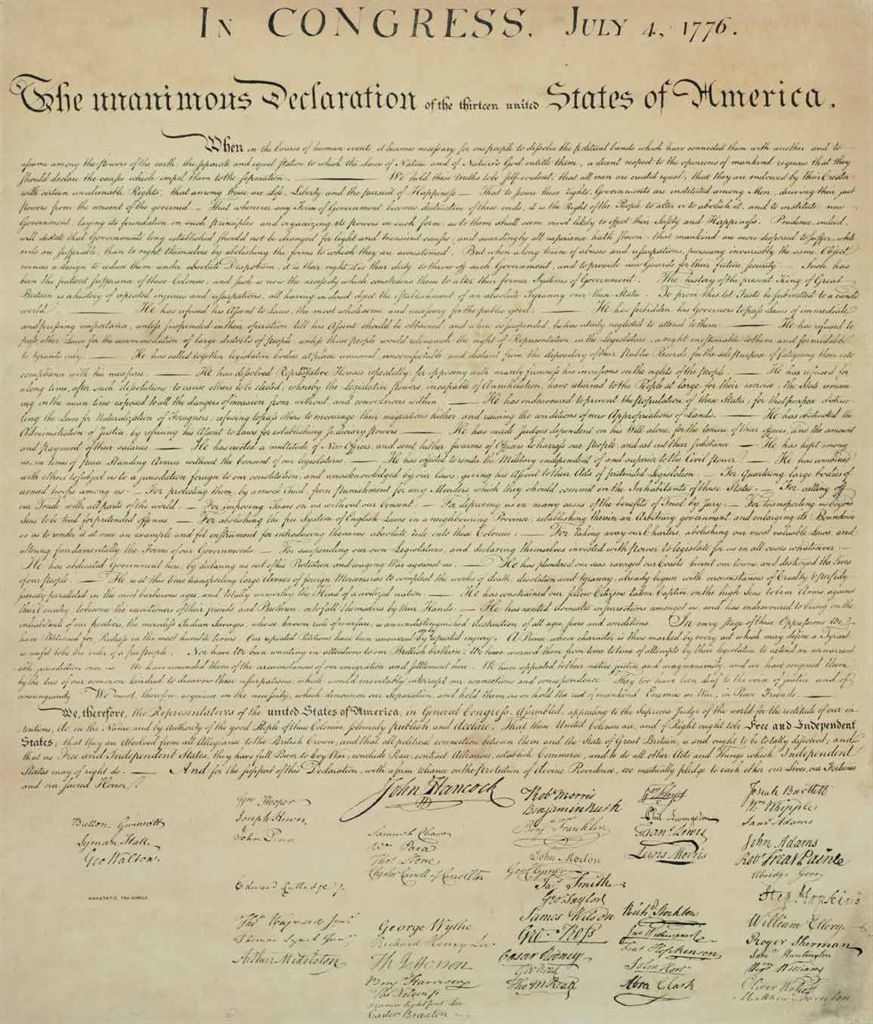
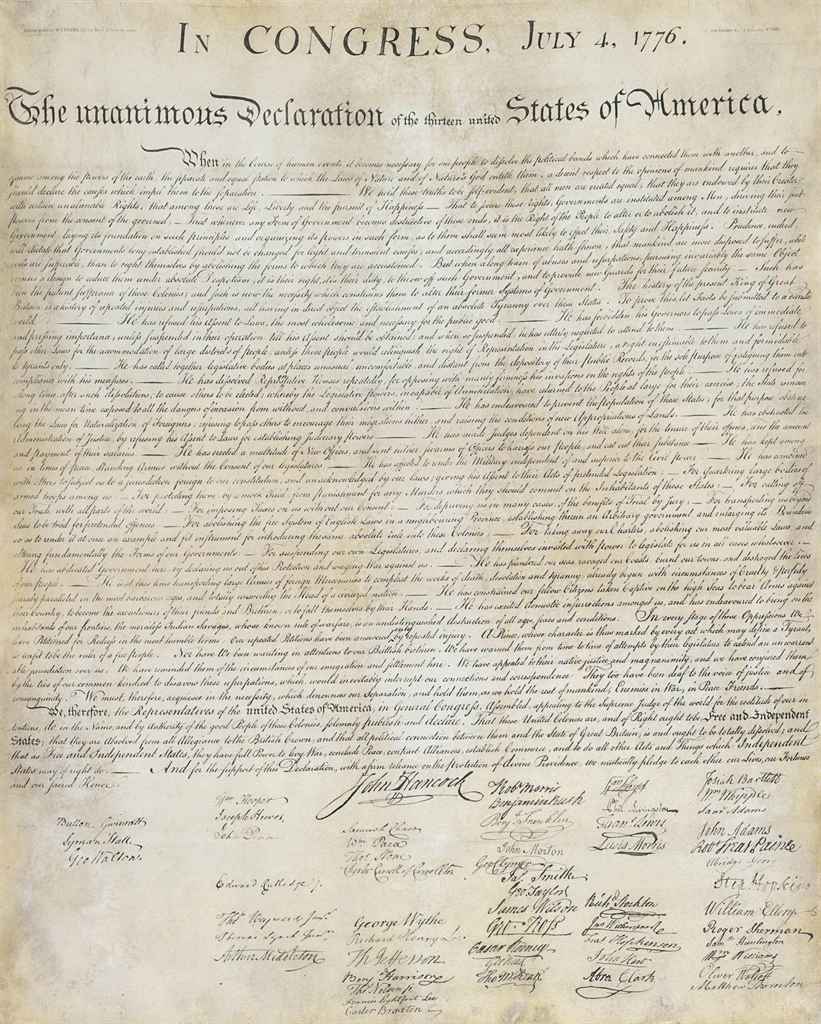
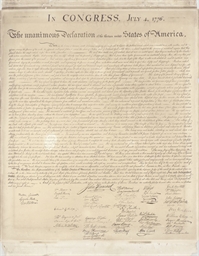
.jpg)
.jpg)
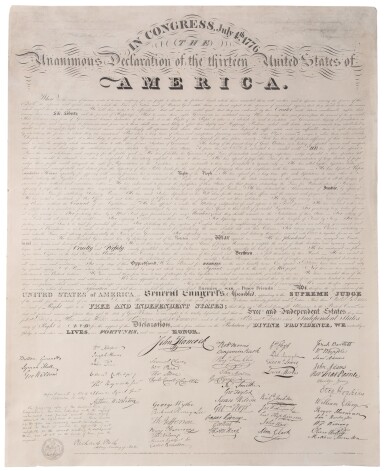

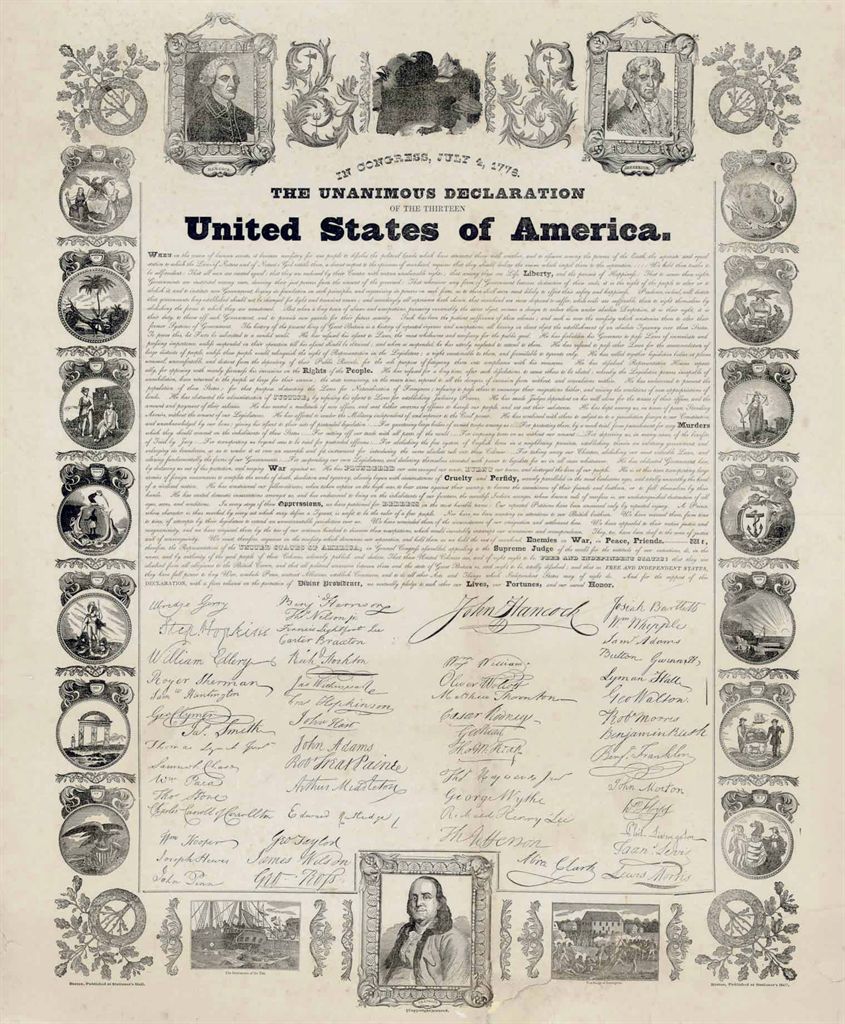
.jpg)
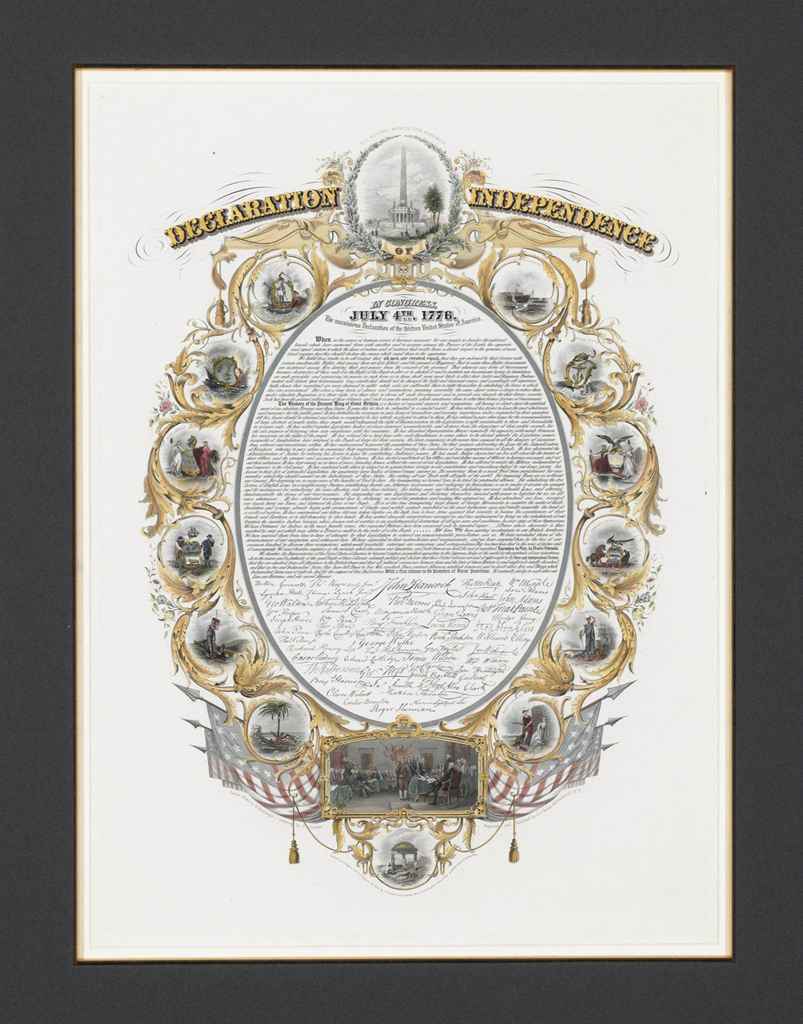

Try LotSearch and its premium features for 7 days - without any costs!
Be notified automatically about new items in upcoming auctions.
Create an alert